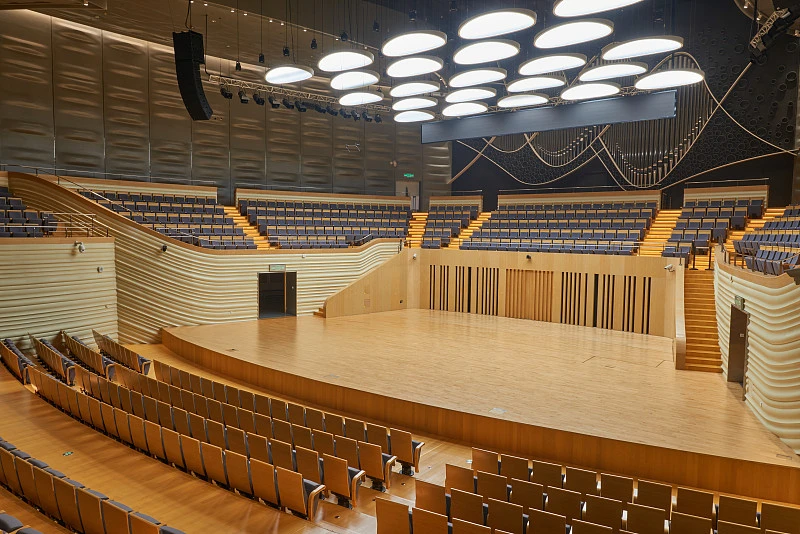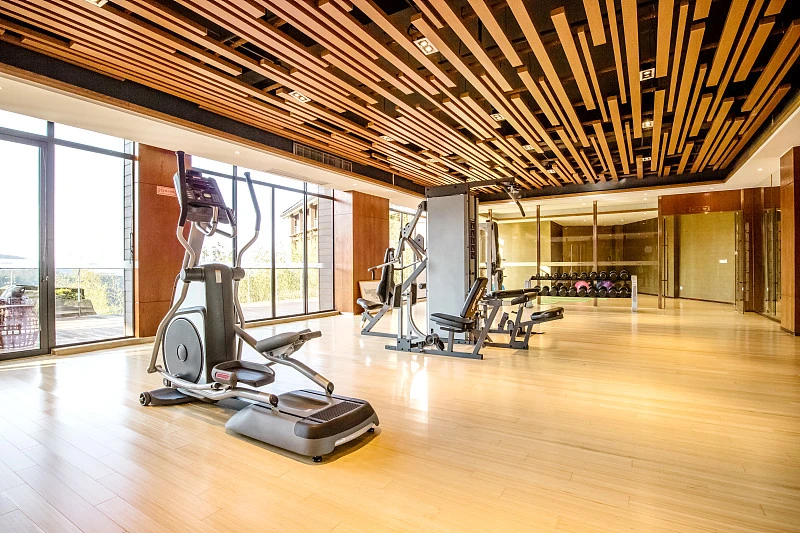Facility Wood Flooring Application Guide: Professional Considerations for Multi-Purpose, Dance, and Fitness Venues
Sports wood flooring is not a "one-size-fits-all" product; it requires tailored selection based on the core function and type of activity housed in the venue. Multi-purpose, dance, and fitness facilities each have distinct flooring requirements, and the design of the sub-structure is key to meeting these specific performance demands.
I. Multi-Purpose Sports Venues: The Art of Balance and Area Deformation Control
Multi-purpose venues must accommodate a variety of activities, including basketball, volleyball, badminton, indoor soccer, and even large assemblies. Therefore, the flooring system must possess high adaptability and durability.
Full EN 14904 Compliance: As previously discussed, multi-purpose floors require balanced performance across all EN 14904 indicators—including shock absorption, vertical deformation, ball rebound, and rolling load resistance—to ensure that any sport can be played in a safe and high-performance environment.
The Essence of Area Deformation Control: For multi-purpose venues, "Area Deformation" is a decisive performance metric beyond vertical deformation. It measures the extent to which the surrounding area is pulled and deformed when one specific point of the floor receives an impact.
Low Area Deformation is Key to Quality Multi-Purpose Flooring. For example, when a basketball player jumps and lands near the three-point line, a low area deformation design ensures that a teammate standing near the free-throw line is not affected by the floor vibration. It effectively isolates the impact force, guaranteeing the stability of athletes in adjacent areas, and is the most effective measure to prevent the "trampoline effect."
High Rolling Load Resistance: Multi-purpose venues frequently require the movement of heavy equipment, such as retractable bleachers, scoreboards, or stage equipment. Therefore, the flooring system must possess excellent resistance to rolling loads (EN standard requires no less than 1500N) to prevent permanent deformation or damage under heavy pressure. This usually necessitates more robust surface boards and a more sophisticated sub-structure design to effectively distribute the pressure.
II. Professional Dance Venues: The Pursuit of the Ultimate "Sprung Floor" and Safe Shock Absorption

Dance, especially ballet, contemporary dance, and jazz, involves extensive jumping, landing, and high-level movements that place tremendous stress on the dancer's knees, ankles, and spine. Consequently, safety and injury prevention are the primary requirements for dance flooring.
Suspended (Sprung) or Basket-Weave Structure: Professional dance floors must feature a "Sprung Floor" or "Suspended Floor" structure (e.g., Harlequin WoodSpring). The core of this structure lies in its resilient support layer, typically consisting of prefabricated engineered battens, high-density elastic pads (such as double-density shock absorption pads), or a basket-weave sleeper system.
This design provides an extremely high rate of shock absorption (excellent systems can reach 64%) and distributes it uniformly across the entire floor area. This ensures that dancers receive a consistent "feel" and energy return regardless of where they land, thereby eliminating "hard spots."
Surface Material: While the underlying structure is wooden and suspended, the final surface for dance performance and training is often specialized vinyl (PVC) dance marley or a finished hardwood.
Vinyl marley (such as professional dance floor covering) provides a precisely calibrated level of anti-slip, ensuring stable footing while also allowing for necessary "floor friction" (as in contemporary dance), and is easy to clean and maintain.
If a hardwood surface is used, the finish must ensure an appropriate micro-level of slipperiness to prevent sticking while avoiding excessive slickness.
III. Fitness Studios and Yoga Centers: Balancing Function Zoning, Comfort, and Hygiene

Fitness venues require complex functional zoning, and the demands vary significantly:
Low-Impact Zones (Yoga, Pilates, Aerobics):
Comfort Priority: Requires the floor to have moderate resilience to reduce discomfort during prolonged standing and kneeling positions. This often involves wood or composite flooring with an elastic mat layer or foam backing.
Hygiene and Cleanability: The surface must be sweat-resistant, anti-fungal, and easy to wipe clean and maintain dry conditions to meet strict public health standards.
High-Impact / Strength Training Zones (Machines, Free Weights):
Extreme Durability: Traditional wood flooring cannot withstand the direct impact of barbells and dumbbells. This area typically utilizes high-density rubber or polyurethane padding, not wood.
Shock and Noise Reduction: The main function is to maximally absorb the tremendous impact force of dropped weights, protecting the structural layer beneath and significantly reducing noise and vibration to avoid disturbing adjacent areas or lower floors.
Customize Your Champion Venue. Talk to mindoo.
Choosing the right sub-structure is the difference between a good floor and an exceptional one. At mindoo Sports Flooring, we are experts in engineering application-specific solutions, whether you need the low Area Deformation control of a Multi-Purpose floor, the crucial Sprung Floor safety of a Dance Studio, or the resilience required for specialized Fitness Zones.
As a dedicated manufacturer, we supply all types of specialized wood flooring materials and sub-systems.
Don't compromise on performance or safety. Contact a mindoo specialist today for a tailored consultation on achieving EN 14904 compliance and unlocking the full potential of your facility. Click here to secure your consultation and build lasting trust with mindoo.